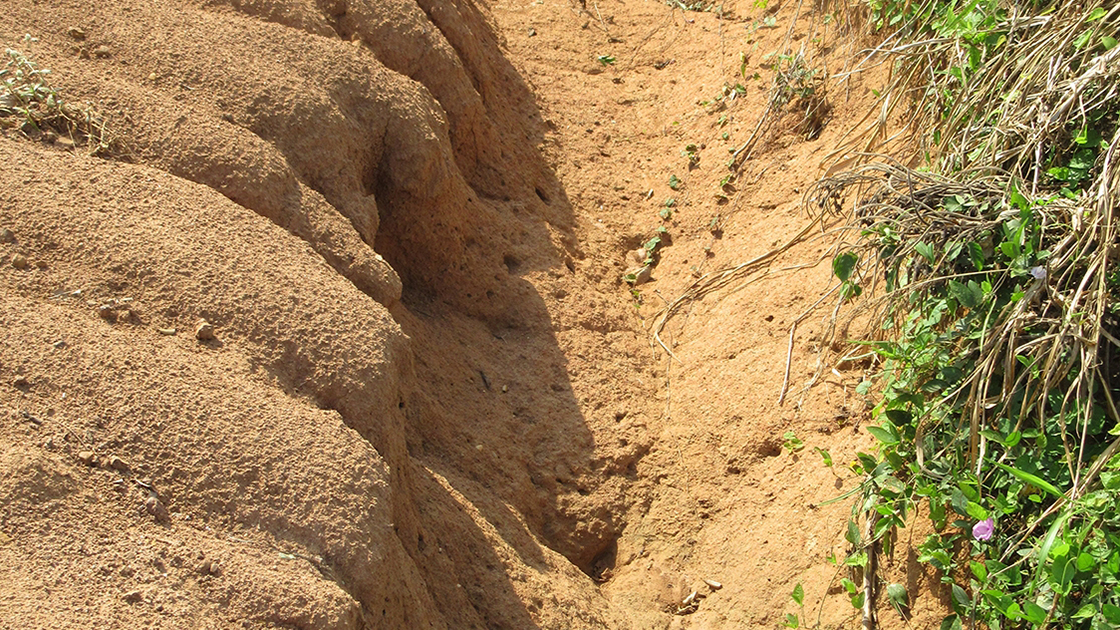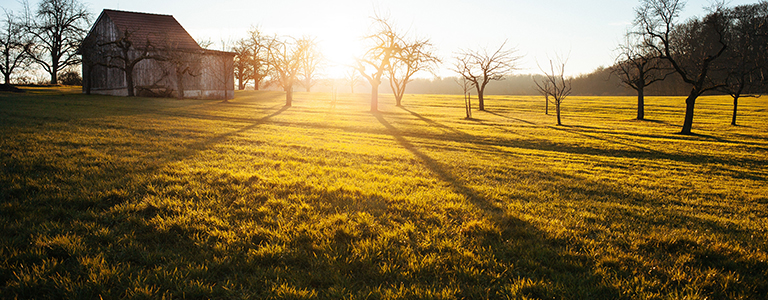
Erosion is more common than most think. Your garden could be eroding slowly before your eyes, and you wouldn’t even know it! Many myths circulate often regarding erosion control and give misleading information which could do more damage than good.
Keep reading to learn about some common misconceptions people often have with erosion and erosion control methods. Avoid these mistakes and have the best chance to recover or rebuild your garden and prevent erosion from recurring.
4 busted myths about erosion control
1. Erosion is only for very dry or very wet areas
There is a myriad of forms of erosion that affect soils and landscapes of all geographical properties.
Water erosion is fairly common in Sydney coastal regions. How it works is when raindrops hit the bare soil with the gravitational force from falling in the sky, the soil is broken up. The soil fragments clog up soil pores and prevent water from infiltrating the soil. Water then accumulates on top of the soil and increases runoff which takes soil with it.
You’ll likely find wind erosion in dryer more arid contexts. It is most likely to occur when strong winds blow over light-textured soils that may have been heavily grazed during drought periods.
You will find these forms of erosion amongst many others wherever you have soil and natural forces such as water and wind.
2. The only way to control erosion is by planting special greenery or grass
This is also false. There are plenty of ways to control erosion with a product or solution that specifically suits your needs. For example, most erosion control products generally provide a protective barrier for the soil until vegetation takes hold. These specialised products also provide a temporary erosion solution by protecting against water and wind erosion and promoting vegetation growth.
3. Urban areas don’t battle erosion
Urban construction, natural forces, and heavy traffic often have devastating effects on the landscape, causing erosion and loss of topsoil. Reducing soil erosion is important to preserve the nutrients rich in the soil. Common forces found even in urban contexts that contribute to soil erosion are rain, wind, and physical disturbance.
Just because there is lots of concrete and cover, doesn’t mean your soil is completely immune to erosion and its harmful aftereffects.
4. Erosion won’t permanently damage your garden
If left unchecked, soil erosion can eventually permanently damage your landscape and make it increasingly harder to recover and revegetate. It’s best to start today and preserve your garden before the initial warning signs. Your garden deserves the best chance it can possibly get to thrive through every season.

Best erosion control methods for Sydneysiders
Sydney is prone to dramatic changes in weather. The three basic principles to follow when thinking about erosion control are to use land within its capability, protect the soil surface with cover, and control runoff before it develops into an erosive force
Soil erosion can easily be avoided by using land within its capability. The land’s position, soil type, and slope determine how vulnerable it will be to erosion. It may not be suitable for agriculture or suitable only for an activity that limits erosion.
There are several resources to help determine how land should be used to avoid erosion:
- For cropping lands — land management field manuals map and describe the land types in many districts and provide advice on land use and management for each soil type. Go to our library catalogue and search for land management field manuals to view manuals available in your region.
- For grazing lands — maps of soils and land types are available for most areas. These give graziers an indication of what soils their property may have and are a useful planning tool. Search for soils maps and reports in your region.
Use land according to its capability: the steeper slopes and shallower soils suitable for growing pastures, and the lower slopes and deeper soils suitable for growing crops.
Surface cover and runoff
The surface cover is a major factor to control erosion because it reduces the impact of raindrops falling on bare soils and wind removing soil particles. It also reduces the speed of water flowing over the land.
Erosion risk is significantly reduced when there is more than 30% soil cover. The total cover is achievable for many grazing and cropping systems.
Runoff concentrates as it flows downslope. By the time rivers draining large catchments reach the coast, they are usually just a few hundred metres wide. Even though surface cover encourages runoff to spread, concentration is inevitable.
The relationship between cover and soil loss
Coordination across the catchment is important when implementing runoff control measures. Runoff may pass through several properties and cross several roads (sometimes railway lines) as it passes from the most remote part of a catchment to a major drainage line or creek.
Using trees to control erosion
Trees are often considered to be the universal answer to control soil erosion. Tree roots help prevent landslides on steep slopes and stream bank erosion, but they don’t stop erosion on moderately sloping hillslopes.
In forests, the soil surface is usually protected by a layer of mulch from decaying vegetation as well as a variety of surface-growing plants. If the soil is bare under the tree canopy from overgrazing, vehicles, or pedestrians, soil erosion will still occur.
Coir matting as the most effective erosion control method
One very effective way of preventing land erosion is to install coir matting. It is an open-weaved sheet of 100% biodegradable natural coconut fibre thread. Weaving the product provides it with additional strength against land erosion, as well as making it last longer than other erosion control products, such as jute matting.
Coir matting is designed to be partnered with vegetation during natural regeneration projects as the vegetation provides it with enough strength to prevent any land erosion, even after long periods of heavy rain. As a result, it is developed to be the perfect partner to vegetation, promoting the growth of any new plants and preventing the loss of moisture from the topsoil.
Although coir matting is completely biodegradable, it is designed to be a permanent solution to any land erosion issue, being able to resist extreme winds and temperature whilst still maintaining moisture and preventing land erosion.
To find out more about erosion control methods for your property don’t hesitate to contact All Stake Supply to provide you with all your erosion control needs. Contact them today on 1300 130 123.
